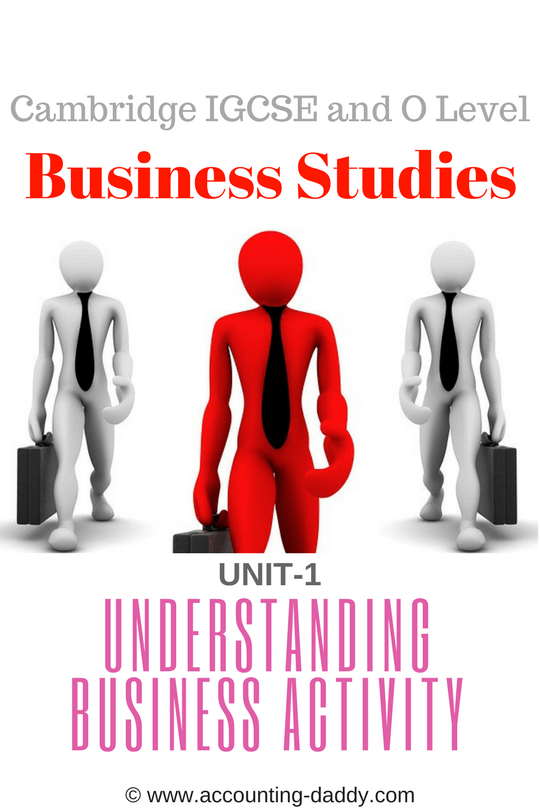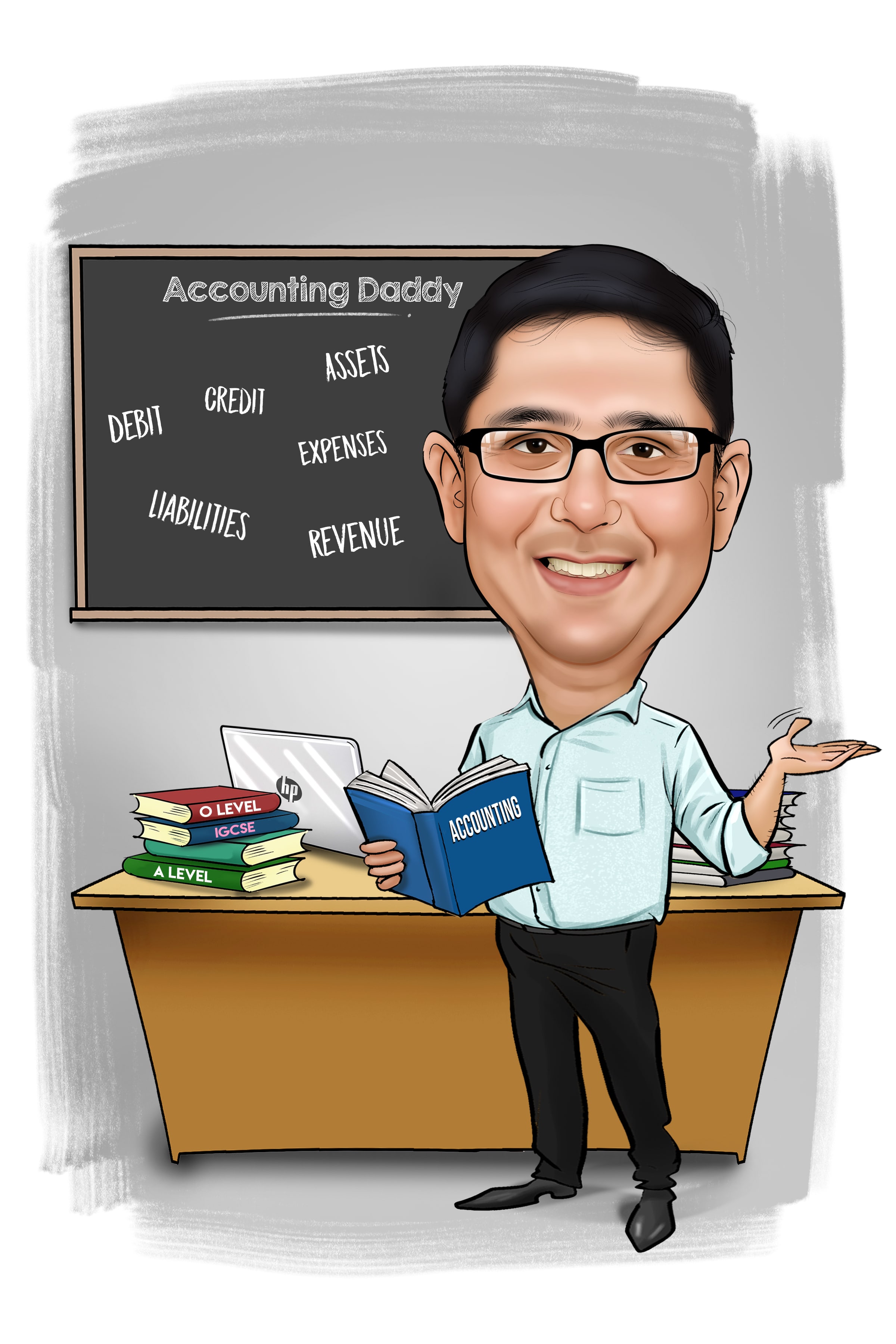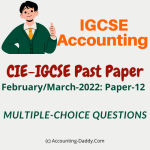|
|
Understanding Business Activity.
Welcome to Section-1 : “Understanding Business Activity” of Cambridge O Level and IGCSE Business Studies. Before we explore this part of Business Studies study material at Accounting-Daddy.com, let’s examine what Cambridge wants us to learn under this section at secondary education level:
As per the Cambridge syllabus specification:
Section-1 : "Understanding Business Studies" covers the following topics:
- Business activity
- Classification of businesses
- Enterprise, business growth and size
- Types of business organisation
- Business objectives and stakeholder objectives
Business Activity
As per syllabus specification under Business Activity topic:
Students should be able to comprehend:
- the concepts of needs, wants, scarcity and opportunity cost
- the importance of specialisation
- the purpose of business activity
- the concept of adding value
- and demonstrate an understanding of business activity in adding value and helping to satisfy the needs of customers in a changing competitive environment.
So here all our resources/revision materials are limited to the boundaries of the above syllabus.
Introduction
Hey, today we are going to discuss the term "Business". When you hear the word "Business" you may think oh! It's a common word which we all come across in our day to day activities. Exactly, your thoughts are right!
Here are a few examples to comprehend how we are connected with the Business.
(a) The yummy food you eat.
(b) The fashionable clothes you wear.
(c) The trendy wrist watches you use.
(d) The handy smart, slim mobiles you carry.
(e) The elegant apartments where you live.
(f) The incredible books which help you to gain knowledge.....etc
Every product we use in our daily lives comes out of business operations across the world.
There is no limit to the above list. We can add up infinite products, but you need to understand that these goods and services are all provided to us by Business.
Click here for "Business" definition.
What is Business Activity and what is its purpose?
"Any activity undertaken by the business for the purpose of earning profits or gaining economic opportunities is known as Business Activity."
The purpose of business activity:
The primary purpose of the business activity is to provide the goods and services to meet the needs and wants of the people and make a profit.
Businesses make use of the scarce resources and produce goods and services which are demanded by consumers. Without business activities, there would be no goods and services available in the market.
Businesses produce different types of goods and services. The main categories are,
• Consumer goods
• Consumer services
• Capital goods
Consumer goods:
Consumer goods are tangible goods which are sold by the businesses to the people. The two main types of consumer goods are durable and non-durable goods.
• Durable goods have a long lifetime, and people use it over and over again. For example, televisions, computers, cars, furniture.
• Non-durable goods are those goods which have a short lifespan and can be consumed by people only once. For example, food and vegetable.
Consumer services:
Consumer services are intangible services which are sold by the businesses to the people. For example, transport, banking, insurance.
Capital goods:
Capital goods are products which are used by the other businesses in their production process. For example, Computers, machinery, delivery vans.
Needs and Wants.
What are needs?
A Need is something which is essential for all human beings to survive. It is not anything of a desire but it is more of a requirement. Examples of needs: Food, Shelter, Clothing and Water.
Wants are opposite of needs, without which all human beings can survive. It is purely a desire of oneself. Wants are unlimited. If one want is satisfied another want arises. Examples of wants: Luxurious cars, Perfumes, Motorbikes, Smart Phones, Candlelight dinners, Holiday packages etc.
Basic Economic Problem.
The basic economic problem in all the economies is unlimited wants and limited resources, which lead to three important questions:
- What to produce?
- How to produce?
- For whom to produce?
Click here to expand your horizons!
What is scarcity?
The limited resources and unlimited wants lead to scarcity. It just means that there are not enough resources to produce all the goods and services for the entire economy. So, this leads to choice and every economy has to plan efficient allocation of resources to satisfy the human needs and wants.
Choice and Opportunity Cost.
|
What is a choice? It is an act of choosing between two or more possibilities. We always make choices in our daily life. For example, Ali has $ 100 from which he plans to buy a new computer game DVD, and at the same time, he also wants to buy a Business Studies past papers to prepare for his IGCSE examinations. He chooses between these two and decides to purchase the Business Studies past papers which are more worth than buying the new computer game DVD. |
Play this excellent video to recap the content on this webpage. Video Credit: Kate Mary |
What is an opportunity cost?
The next best alternative forgone out of your decision is known as opportunity cost. In the above example, Ali has forgone the new computer game to buy the Business Studies past papers. Here the opportunity cost is the cost of buying the new computer game DVD.
The choice is not only made by an individual consumers like us, but it is also made by businesses and governments too in making use of the available scarce resources efficiently. Allocation of resources plays a significant role in the development of any economy.
Webpage contributed by: Ms. Soni Pawar, Lecturer, MI College, Maldives.
c2
Have A Thought-Provoking Notes About This Topic?
Do you want to share your comprehensive and thought-provoking notes on "Business Activity" topic from Unit-1: Understanding Business Activity? Do it here!
|
|






New! Comments
Have your say about what you just read! Leave us a comment in the box below.